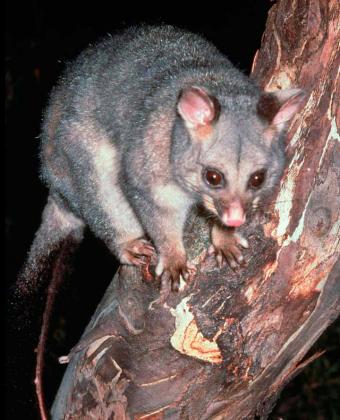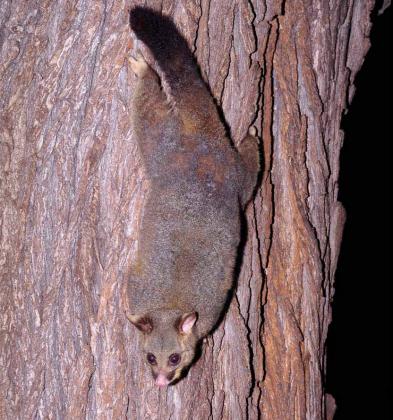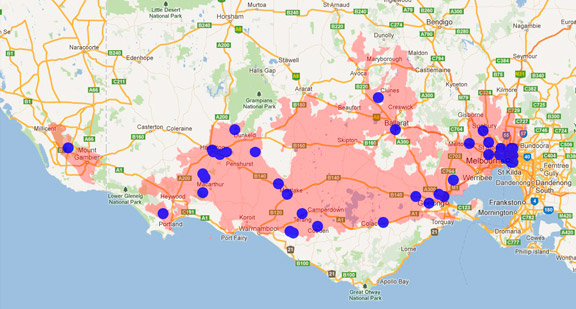A range of teacher professional learning programs will be developed to accompany the Biodiversity of the Western Volcanic Plains online outreach...


Common Brushtail Possum
Trichosurus vulpecula
Nocturnal. Sleeps in tree hollows or similar protected places, including ceilings of buildings. The most abundant Australian possum, often living with humans. Can live for 11 years in the wild. Starts breeding at 1 year of age, with usually a single young born. The mother needs to take care of the young for at least 7 months.
| Details | Description |
| Type | Mammal |
| Group | Marsupial |
| Identifying Characteristics | |
| Distinctive Markings | Thick black tail, ears longer than wide, dark markings around eyes and a pink nose. |
| Diet | Omnivore. Eats a variety of plants, leaves, fruits and flowers but sometimes eats nestling birds. |
| Habitat | Open dry eucalypt forest, woodlands, suburban areas. |
| Bites/Sting | test |
| Sounds | A loud series of nasal coughs and hisses. |
| Taxonomy | |
| Phylum | Chordata |
| Class | Mammalia |
| Order | Diprotodontia |
| Family | Phalangeridae |
| Genus | Trichosurus |
| Species | vulpecula |

Distribution maps indicate current and historic locations where species have been sighted.
Source: Atlas of Living Australia
| Conservation Status | |
| DEPI Advisory List | Not listed |
| FFG Act | Not listed |
| EPBC Act | Not listed |
The conservation status of species is listed within Victoria and Australia.
The Department of Environment and Primary Industry (DEPI) Advisory List consists of non-statutory advisory lists of rare or threatened flora and fauna within Victoria.
The Flora and Fauna Guarantee Act 1988 (FFG Act) lists threatened species in Victoria. Under the Act, an Action Statement is produced for each listed species.
The Environment Protection and Biodiversity Conservation Act 1999 (EPBC Act) is the Australian Government’s key piece of environmental legislation, listing nationally threatened native species and ecological communities.



